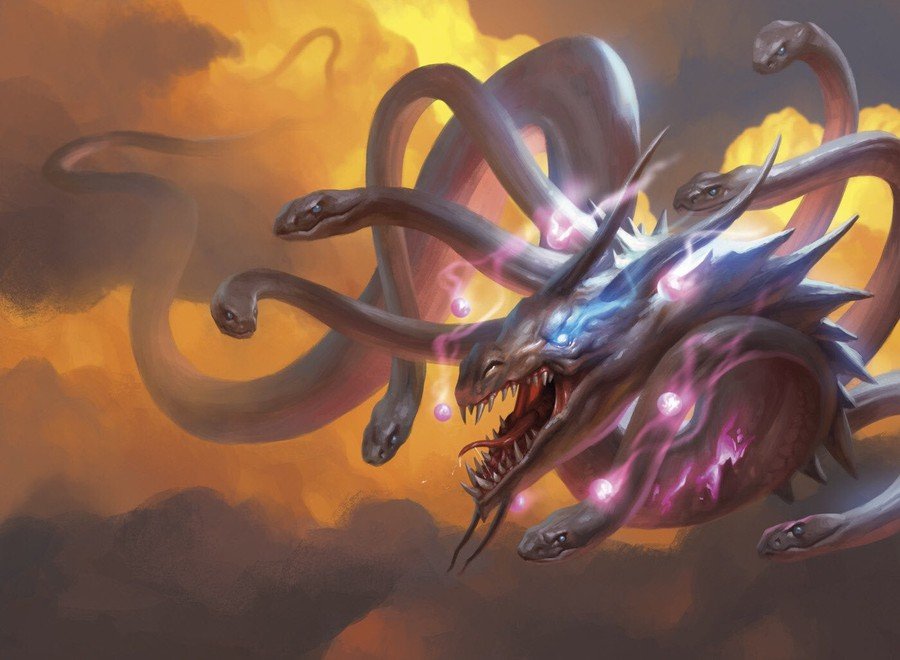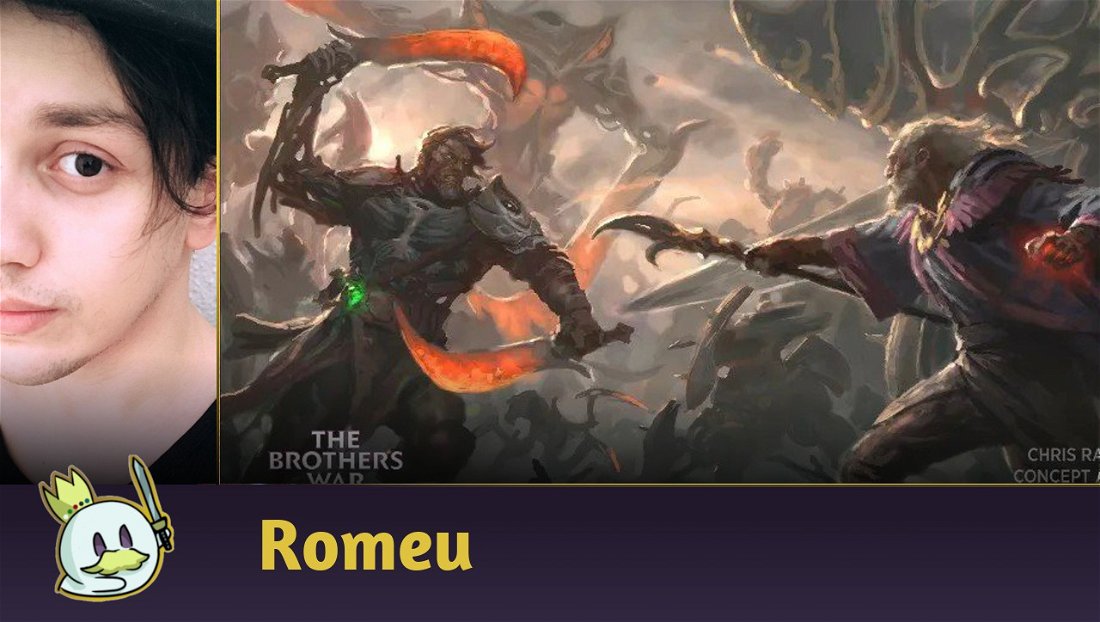In the past article I talked about the origins of Commander and the reasons that led it to become so viral among casual gamers.
However, I also pointed out that the format's popularity grew so much that it eventually went beyond the kitchen table niche, influencing the creation of a number of other game variants. At one point, these alternative formats even grew individually as they piggybacked on the Commander's own rise. Such diversity turned out to be positive as it contributed to different profiles of players being able to feel satisfied playing EDH, and not just casual players. At the same time, this generated a cacophony that caused some confusion in many groups, as we had several “Commanders” coexisting, each with their respective rules.
Ad
It was quite common for one of these formats to announce the change of a rule - like banning a card, for example - and many people interpret it as if it were valid for another format. This is aggravated by the fact that a significant number of players (especially casual players) are not sure where to find the most reliable source of information about the format they play, making it difficult to determine and making much of the news reach them through intermediaries.
To some degree, this still happens today. Have you ever had to explain to a colleague that Edgar Markov and Derevi, Empyrial Tactician are NOT banned from Commander but from DUEL Commander?! Have you ever run into anyone who insisted that the official ban list was from the Wizards of the Coast website and not from the Rules Committee?!

If you have ever been or are involved in these situations, this article is designed to help you. It serves the purpose of grouping all the necessary information about the various Commander variants in one place, with links to all official sources. This way, you will not only be able to better understand the Commander scenario in a more comprehensive way, but you will also be able to help others understand it by sharing a single link. More than that, you'll also be able to have your first contact with some game variant that you didn't know yet, and who knows, maybe identify with a new format.
Commander - Elder Dragon Highlander
Starting with Commander itself, the one we all know and which gave rise to all the other variants. Also known around as Multiplayer Commander or by the old acronym for EDH (Elder Dragon Highlander), this is the original format whose philosophy and history I've told you in the past article and which you probably already know (otherwise check it out later). What many may not know is that Commander/EDH is not a format managed by Wizards of the Coast. In fact, the company's only contributions to the format were changing its name from Elder Dragon Highlander to the current Commander, and recurrent development of dedicated products like preconstructed decks, which is already quite a thing. However, all format management, including maintenance of its rules, banned list and disclosure is done by a committee of 4 people who have been involved in the development and improvement of EDH since long before Wizards thought about publishing the first product with the Commander brand.
The four members of the Commander Rules Committee - Sheldon Menery, Toby Elliott, Gavin Duggan and Scott Larabee - all hail from the MTG judge community, and although some work sporadically with Wizards, in practice they are completely independent of the company relating to the management of Commander. At one point, Wizards started to embrace the format and consider it in its market strategies, releasing new cards and specific mechanics for it, but it leaves the control over more structural decisions to this Committee.
Ad

As an independent body, the Commander Rules Committee has its own official page (check out here), which they use to communicate and mainly to provide updates on the format. It is the most reliable place to find such information.
As mentioned at length in the last article, Commander is originally a casual format, created to almost serve as an outlet for competitive play. Its rules and banned list are designed to provide long matches, and while it is possible to play 1v1 with them, the experience is not as satisfying as if played in multiplayer mode. For this reason, this format is the most suitable for anyone looking for this type of game.
Duel Commander
As the traditional Commander spread throughout the Magic community, it soon began to attract competitive players as well, attracted by the huge variety of powerful cards that were legal on it. A scene then arose around a demand for championships (especially in Europe), organizing prize tournaments and growing almost parallel to the casual Commander. However, the original format was not exactly favorable for this, as its rules and banned list included multiplayer and tournaments required two-player games to be viable. Duel Commander grew out of this need by making the Commander more balanced for 1v1 matches. The first Duel Commander rules committee was created by Frenchman Kevin Desprez in 2007, and has undergone several configuration changes since then. This French committee has long taken the lead when it comes to promoting Commander Championships in Europe - many with considerable prizes - and has become one of the main references for the rest of the world when it comes to two-player Commander
Rules
The Duel Commander (or French Commander, for some) has the same rules as the traditional Commander, with the following exceptions:
- Duel: A Duel Commander game is a two player game.
- Starting Life Totals: 20
- Banned and Restricted List: Duel Commander has its own banned card list that includes cards with special edges (silver, gold, Conspiracy, etc.), oversized cards, cards that require physical dexterity (Chaos Orb), ante (Amulet of Quoz), sub-games (Shahrazad) as well as cards marked offensive by Wizards of the Coast (Click here to the list). The French list also has a distinct list of cards banned only as commanders but still playable in the deck, with most cards with partner or eminence making this list. As this is a work in constant progress, the most reliable way to check the updated banned list is through its official website: mtgdc.info
.

Leviathan Commander
The French Duel Commander for a long time was the main reference in 1v1 Commander games in the world, but it wouldn't be the only one. Other independent rules committees have also emerged with similar goals to better adapt the Commander for competitive 1v1 games. One of these was the Leviathan Commander, also called the “Italian List”. For a long time, the French committee and Leviathan “rivaled” for the vanguard of the 1v1 Commander, with both offering alternative solutions to the increasingly frequent balancing problems that the format was experiencing. The biggest of these storms undoubtedly occurred after the years 2016 and 2017 with the advent of the Partner and Eminence mechanics, which proved too powerful in 1v1 games. The way the French Committee handled this - intermittently banning several cards and lowering the starting life totals to 20 - sparked controversy and further divided the community, causing many groups to then migrate to Leviathan.
Ad
Enthusiasts of both variants are now relatively established, with the two sharing most of the Commander 1v1 community. So if you plan to play in a Commander tournament like this, be sure to check which ban list is being used.
Rules
Leviathan Commander (LC) has the same rules as the traditional Commander, with the following exceptions:
- Duel: A Leviathan Commander game is a two player game.
- Starting Life Totals: 30
- Starting hand and Mulligan: The starting hand and mulligan rules in Leviathan are different, to balance cards with partner. Each player starts with 7 cards in hand. But in case a player chooses to start with more than one commander, the player puts X cards from his hand at the bottom of his library in any order, where X is 1 plus the number of mulligans made. This way, if players start the game with 2 commanders and decide not to make mulligans, X will be 1 and the player will have to place a single card from their hand at the bottom of their library, starting with one less card in their hand. If they decide to mulligan once, the number of cards put on the bottom of his library will be 2, and so on similarly for more mulligans.
- Commander Switch: Another distinction of the LC compared to other 1v1 variants is the possibility to switch commanders between one match and another in a better-than-three game.
After each game, players decide if they want to continue using the same commander or exchange for another. Players decide simultaneously, not knowing whether the opponent is choosing to change or not. Each player shuffles their commander(s) into their deck and introduces the same or new commander(s) of the same deck before the start of each following game during each round. To ensure that information is not revealed, both players have their commander face down and face up when the next game starts. If a player decides to switch, their previous commander is shuffled into their library. Your deck's color identity must remain the same. For example: If you start with a Dragonlord Ojutai (white and blue) as your commander, you can only switch to another commander with white and blue identity, making Geist of Saint Traft a legal option and Vendilion Clique illegal. Players cannot switch to commanders who are on the Banned List as Commanders. Players can also switch from a single commander to two partners and vice versa.

- Banned and Restricted List: Leviathan Commander also has its own banned list which also has a separate list only for cards that cannot be commanders but can play in the library which is generally smaller than the French list. As this is a work in constant progress, the most reliable way to check Leviathan Commander's up-to-date banned list is through its Committee's official website: leviathancommander.wixsite.com/.
Archon Commander
Archon is a proposed democratically managed 1x1 Commander format. It is focused on competitive play, and all format changes are made transparently and with community approval. The members of its Rules Council - called Archons - are elected by the official format community at Discord once a year. They are responsible for recommending all sorts of format changes, as well as providing detailed clarifications to the community whenever a proposal is put to a vote. For a change to be sanctioned, it must have the approval of at least half of the community. Details on how voting works can be found on the format's official website
.
Ad
Although it is the most recent among the most consolidated Commander 1x1 variants, Archon stands out for its participative character and has been gaining ground.
Rules
Archon has the same rules as the traditional Commander, with the following exceptions:
- Duel: An Archon game is a two player game.
- Starting Life Totals: 20
- Commander Damage: Archon games do not use the rule that causes a player to lose the game if he has suffered 21 or more combat damage from a commander.
- Deck Size: Archon decks are not subject to Commander rule 3, which says that a deck must contain exactly 100 cards. Instead, each deck must contain AT LEAST 100 cards, including its commander(s). In other words, the minimum deck size is 100 and there is no maximum deck size.
- Commander Change: Similar to Leviathan Commander, Archon allows a player to replace their commander between one game and another in a Bo3 matchup. In a tournament, players must designate their commander(s) and cannot designate other cards as their commanders for the first game of each game. If decklists are used, the main commander(s) must be highlighted. Players can, however, switch commander(s) at the start of each other game in a matchup. The new commander(s) must be chosen from the deck, be legal and have the same color identity color as the main commander(s). Players can keep these cards face down as they are chosen, but each player must clearly indicate which card face down they are choosing.
- Banned and Restricted List: Like the previous variants, Archon has its own banned list which also has a separate list just for cards that can't be commanders, another even more specific list of cards that can't be used only as partners and another for cards that cannot be chosen as companion (only Lutri, the Spellchaser is in the latter). Another difference in Archon's banned list is that cards with square and gold borders are also allowed in tournaments, as long as they are not distinguishable from the rest of your deck (using opaque shields, for example). As this is a work in progress, the most reliable way to check Archon's up-to-date banned list is through the official format's official site: archon.page/.
cEDH
It is undeniable that there is a growing demand for competitive Commander games, contrary to what it was created for. Much of the effort to do this over time has been aimed at improving the 1v1 experience (as seen above), but there are also those who prefer to keep the Commander's original multiplayer nature. cEDH - Competitive EDH - is the result of this effort: a way to play Commander multiplayer competitively. It is not, however, a distinct format. The cEDH does not intend to change the rules or the list of bans made by the Commander Rules Committee. Instead, competitive players are just looking to modulate the traditional multiplayer Commander experience through a competitive stance. This means, among other things, optimizing decks as much as possible to get the win above all else. There is no room for pet cards or fun interactions; every choice when building a deck or in a game is based on efficiency and how close it will get you to winning.
Ad
Adding this to the fact that Commander is an eternal format with an incredible availability of powerful cards, the result is super efficient interactions, incredibly fast combos and scarily strong and expensive decks. The Commander Rules Committee's lack of attention to this type of game inevitably makes the format permissive to plays that define a game in the first three or four turns, even in a multiplayer scenario. However, the very mentality proposed by the cEDH is capable of counteracting this status quo, as efficient combos demand equally efficient answers. When everyone is on the same power level and assumes the same competitive stance, the game becomes as interesting as any casual table, rather than a simple race to see who combos first... This is the cEDH's proposal.
Although far from being equal to the conventional Commander in number of enthusiasts, the cEDH is the variant that has been growing the most in relevance. The competitive game philosophy contributes a lot to unveiling the real potential of the format as a whole, in addition to triggering very enlightening discussions about power level and table posture in multiplayer.
As this is not essentially a different format, there is no official cEDH page, although there are several regional forums and content producers dedicated to the topic. If you are more interested in cEDH, right here at Cards Realm you will find many articles about it. Check out here.
Conquest
While cEDH is a way to play Commander competitively without the pretense of creating a new format, Conquest would be the first attempt to do so without the fear of changing a few things. The format first came to light in 2020, with the idea of establishing a committee to assess the main cEDH issues - such as the low diversity of decks and its immense financial barrier to entry - offering timely solutions to them in the form of small changes in the rules and the creation of an entirely new banlist, better suited to the context of competitive multiplayer.
A striking feature of Conquest is the low average budget of the decks compared to the cEDH, a distinction purposely brought about by the format's creators through the banned list that excludes cards from the infamous Reserved List. My comrade Felipe Torres has already written an excellent article analyzing Conquest and its most notable points, which you can check out here. For the rest, it is still a marginal format, although still very new. All the rule changes add up to create relatively balanced, fun and board-focused games.
Rules
Conquest has the same rules as the traditional Commander, with the following exceptions:
- Planeswalkers as Commanders: Legendary creatures and also planeswalkers are allowed as commanders.
- Starting Life Totals: 30
- Commander Damage: Commander damage is 12 (instead of 21).
Ad
- Deck Size: The minimum number of cards in the deck is 80, and there is no maximum.
- Banned and Restricted List: Conquest has its own list of banned castes that remains in development. In addition to all the cards in the Reserved List, the list also includes the 10 original fetchlands, and a number of other cards. You can check out the full ban list here.
Brawl & Historic Brawl
Brawl is a format created by Wizards of the Coast in 2018 intending to unite its two most popular formats: Commander and Standard. The idea initially was to foster a Commander variant with 60-card decks, where only Standard-legal cards were allowed and planeswalkers could also be used as commanders. At first, the new format would be released with the identical proposal to the Commander to be aimed at casual multiplayer game. However, the adhesion for 1v1 players (mostly coming from Duel or Leviathan Commander) turned out to be greater. Wizards even released a lineup of preconstructed decks for the format in 2019 along with the Throne of Eldraine set. However, even with Wizards' support, the format ended up not taking hold in the physical game, although it has a fair share in the MTG Arena, where Brawl is the closest we can get to a Commander on the main digital platform of the game.
A variant of the format only available in the Arena, Historic Brawl, has de facto become a representative of the 1v1 Commander on the platform and has become even more popular by allowing any existing cards on the platform rather than being limited to Standard only. I dare say that if multiplayer games were possible in MTG Arena, Historic Brawl would be a much more impactful phenomenon in the global Commander community, although I recognize that such a scenario is quite unlikely.
Rules
Historic Brawl has the same rules as the traditional Commander, with the following exceptions:
- Historic Format: The Historic Brawl allows you to build a deck using any MTG Arena card
- Planeswalkers as Commanders: Legendary creatures and also planeswalkers are allowed as commanders.
- Starting Life Totals: 25
- Commander Damage: This rule does not exist in Historic Brawl.
- Banned and restricted list: Historic Brawl has its own list of banned card, and you can find it here.
Oathbreaker
Oathbreak is a Commander format with a very unusual proposal. In addition to allowing only planeswalkers as commanders, each deck has a Signature Spell, which matches the color identity of the Oathbreaker (the Commander). Both cards reside in the command zone, and you can play Signature Spell from there if your Oathbreaker is in play. The format was created in 2017 by Weirdcards.org, a non-profit group that organizes Magic events that raise money for various social causes.
It is not one of the most played variants as it is difficult to compete with Commander itself as a casual format, but Oathbreaker stands out for the particularity of its rules that, despite being rooted in the basic concepts of EDH, offer different possibilities for deck building and gameplay. The very concept of the Oathbreaker + Signature Spell evokes the flavor issue in a promising way, as if you were the planeswalker and had a favorite “special” up your sleeve.
Ad

Rules
Oathbreaker has the same rules as the traditional Commander, with some exceptions. Detailed rules can be found here. Here is a summary of the main differences compared to Commander:
- Command Zone: Each deck is led by a Planeswalker designated as the Oathbreaker for that deck and an instant or sorcery designated as the Signature Spell that must be in the Oathbreaker's Color Identity. Just like in Commander, you can cast your Oathbreaker from your command zone. Your Signature Spell can only be cast if your Oathbreaker is on the battlefield under your control. Both your Oathbreaker and Signature Spell are subject to the “command zone tax”. These rates are set individually, meaning casting your Oathbreaker doesn't make your Signature Spell cost more.
- Starting Life Totals: 20
- Deck Size: Each deck must contain exactly 60 cards, including the Oathbreaker and Signature Spell.
- Commander Damage: For obvious reasons, this rule does not exist in Oathbreaker.
- Banned and Restricted List: Oathbreaker has its own list of banned cards that you can find here.
Conclusion
These are the main variants of Commander known around the world, but the EDH universe is in constant motion and there is always someone innovating. Magic's replayability allows it to be not just a game, but a platform on which multiple games can be created. While essentially all of these aforementioned ways of playing strongly refer to Commander, each one adds something different and carries with it a manifestation of part of the immensity that the EDH community has become.
What is your experience with any of these other Commander formats? Have you had the opportunity to try one of them? Are there any from this list that you didn't know about and were interested in playing? Are there any you know but have missed out on? Better yet... Have you created any alternative ways to play Magic yourself? If so, I would love to know. Share your alternate experiences with the casual or competitive Commander in the comment box below.
This episode closes the initial loop to understanding the bare minimum about the Commander community. In the next few articles, we'll start digging into the different ways to express yourself in this community through deck building.
Until then!








— Comments0
Be the first to comment